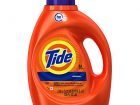Unless you've been sleeping, away from email or wandering the Nazca Plain aimlessly you've probably come across the classic Honda television commercial titled “Cog”. You can see all of it in its full 120 seconds of synchronistic glory here or here.
This ad has been slashdotted, metafiltered, blogged about and certainly attained legendary status by the indisputable power of viral marketing through forwarded emails throughout the internet and blogosphere. And all of this happened several months ago after the ad first aired on UK television in April and Australia in May.
So why am I blogging about it now?
Simple. I still get links to it forwarded to me by friends, associates and acquaintances who are just discovering it for the first time. Most recently my friend and PR guru, Teri, forwarded me a piece that was written in Business 2.0 written by John Battelle. After reading it I gave in to my personal resistance and reluctance to blog about something that is so pervasive — or common.
But who am I kidding.
Just happy trying to relish the role as advertising cognoscenti? Ahhh. Forget it. Let's chat about this ad and Battelle's article that explores the advertisement (that's truly what it is) as film — or even art. But perhaps just worse, is “content”. Battelle writes:
[…] With a plink and a plunk and 86 moving parts, Honda reminds the ad world of the value of great content — and teaches it something about the power of interactivity. […]
To be fair, I'm in agreement with Battelle's primary point which is that advertising doesn't have to hit you over the head with a two-by-four and slam you with product features and benefits to be effective. And Kudos to the creative team at Wieden & Kennedy responsible for concepting and executing the two minutes of pure Rube Goldbergian wonder that seduces audiences to watch, watch again and share in amazement the beauty of cause and effect when “things just work.” I'm not sure what they call their two minutes of fame. But to be sure, they created something just short of an advertising masterpiece.
But call it content?
Calling creative work — whether writing, pictures, media, sculpture, poetry, paintings etc — content is as bad as calling your customers consumers (for you Doc). We don't produce content. We work. We create. And We communicate. But our work isn't just a blob of content designed to fill an empty space or gap.
The Honda commercial is brilliant. Entertainment that is NOT cleverly disguised as editorial — or content. It utilizes the most powerful notion that forms the foundation for excellent and effective advertising — simplicity. And it leverages perhaps the second most powerful technique for effective advertising — association. In Honda's case, the amazing Goldbergian joyride associates the Honda Accord with “things that just work.” Of course, it took over 600 takes and three months to create the spot. And they did get it to work.
Another claim that Battelle states in his subhead (above) is that this ad or Honda's use of it “teaches something about the power of interactivity”. Once again he misses the point. There's nothing interactive about this ad. But Battelle confuses the viral effect of this ad as “interactive”. Sorry. Not the case. This is simply old fashion “word of mouth” advertising. Except today our words spread over social networks like blogs and email as well as water coolers and cocktail parties.
Another thing that perhaps isn't as well known as the ad itself, is Honda used the ad as an experiment with interactive television. Honda ran the ad on BskyB's interactive television system in England. But the only thing interactive about it was a text overly that offered a free DVD or brochure by simply clicking the proper colored button on the iTV remote control. What's great is Honda extended the commercial as entertainment concept by producing the DVD. The DVD certainly features the film, but also includes “the making of” interviews and other information about the car. Great integration.
What Honda should be congratulated for is taking a risk. A risk to innovate. And they innovated on a number of fronts:
- They shot a 2 minute spot in an era where some advertisers think 30 seconds is too long
- The product only appears on screen for just a few seconds.
- They made the ad available freely without registration, water marking or other copy protection or copyright legal jargon.
- They integrated online, offline, direct marketing and more
The result is a film (advertisement/commercial) that people talk about, share and enjoy. The film is extended through a microsite on the Honda UK webpage where it can be downloaded. And a DVD or brochure is made available through interactive television experiment. And All of this is good for the Honda brand.
[ please note that don't and never have owned a Honda automobile and have never performed professional services for Honda or any of its subsidiaries. ]Articles regarding the Honda Commercial: Boston Globe | Guardian | Telegraph
Blogged by: Steve Bell | Rick Bruner



